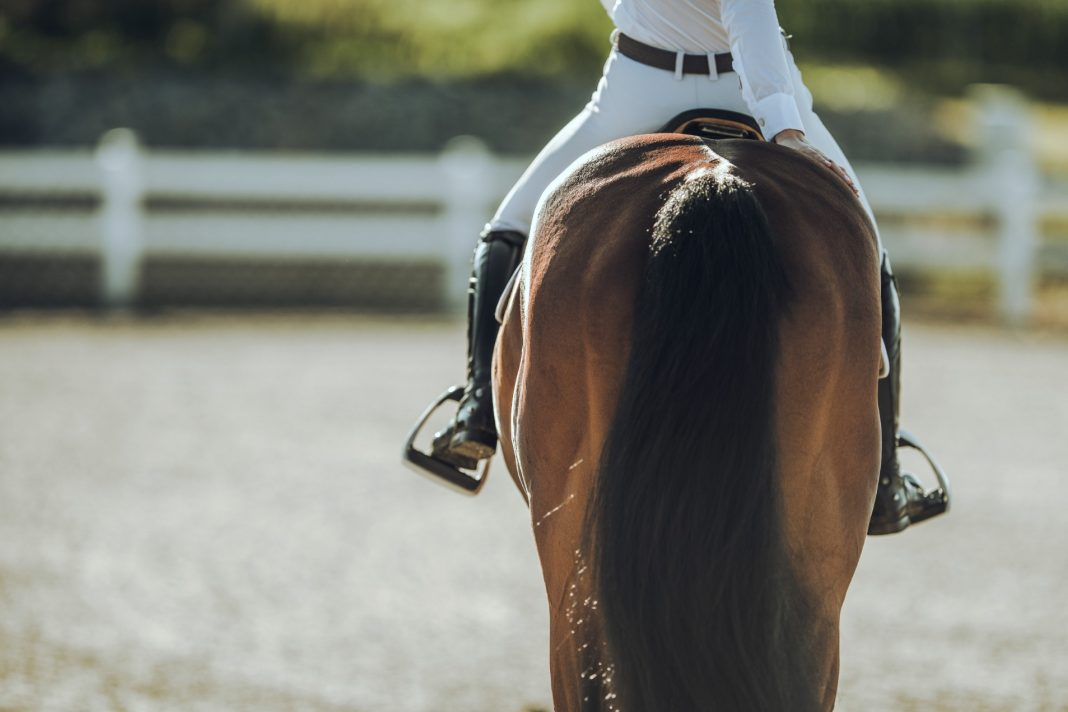Menu

As with humans, horses are either right- or left ‘handed’ and can also have a favourite side. Therefore, they usually have a hindleg which most often pushes more than the other plus a front leg that carries more weight. It is almost impossible to have a completely symmetrical horse. You can compare it to a person who writes well with both his left- and right hand. But as veterinarian Ulla Vestergaard Andersen explains - you can work on it and prevent the asymmetrical movements to take too many tolls on the horse´s body.
If we focus on a left ‘handed’ horse, which pushes its right hind leg and therefore places most weight on the front leg, it will have a tendency to make a volt bigger on the right side. Meanwhile it will also place the hindquarters on a smaller circle. On the left circle the left ‘handed’ horses will most likely make the circle smaller. And it will perhaps “leab" to the inside left shoulder and work with the hindquarters on a bigger volt. Furthermore, the horse’s balance can be challenged in a circle. Because of the lack of balance, the horse has to speed up. If you lower the speed of a poorly balanced horse, it will resist by pushing the hindquarter in- or outside in the volt. This is of course the opposite situation with a right ‘handed’ horse.
Actually, you cannot say that a horse is left- or right ‘handed’ since it will always work diagonal in its weight distribution. However, to make it all easier to understand, you can make a distinguishment between the two. As veterinarian Ulla Vestergaard Andersen does:
A left ‘handed’ horse: pushes with the right hindleg and therefore puts more weight on the left front leg than the right one.
A right ‘handed’ horse: pushes with the left hindleg and places more weight on the right front leg than the left one.
You may also like to read: Veterinarian: Where most injuries come from and how to avoid them
Often the horse will have tensions in the musculoskeletal system that is linked to the asymmetric body. In one of the examples above a horse would often be locked in the lower part of the neck. This makes it difficult for it to bend properly to the left. This also makes it difficult for it to carry its weight on the left hindleg.
You might ask yourself: What comes first, the locking in the body or the asymmetry? Even for a veterinarian this can be difficult to answer. Luckly, most horse owners are aware of the following - that if you do not change the way the horse is using its body in connection to the movements, the re-establishment of the locking will most likely return.
Furthermore, a horse who has not placed the weight equally between the front legs will eventually overload the leg that carries most weight. Ask yourself if the horse is ready to carry a rider in trot? If it cannot trot around on a volt without leaning inside the circle.
This way, you can often and faster get through training if a locking is treated. This gives the horse’s musculature a chance to move the vertebrae correctly. These muscles should ‘just’ build up strength so the naturally asymmetry is reduced.
A left ‘handed’ horse with a pushing right hindleg and a pulling left front leg, will need exercises to correct it. All in all, it is about performing a shoulder-in on the righthand side. This means that the weight is shifted from the left front leg to the right hind leg. Thereby carried on to the inner right hindleg. The pressure is thereby released from the outside left front leg.
Remember also to do the exercise on the opposite side. Otherwise, the horse will eventually turn crocked on one specific side. At the same time, do not ask too much of the horse – move forward slowly.
Written in corporation with veterinarian Ulla Vestergaard Andersen.